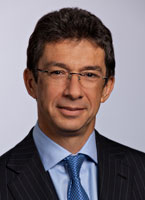Philip Morris International’s cigarette shipment volume during the second quarter to the end of June, at 190,721 million, was down by 1.5 per cent on that of the second quarter of 2017, 193,540 million.
Volume increased by 6.6 percent to 44,788 million in its South and Southeast Asia region and by 5.7 percent to 34,177 million in its Middle East and Africa region. But volume was down in each of its other regions: by 3.6 percent to 47,894 million in the EU; by 4.3 percent to 15,114 million in East Asia and Australia; by 6.3 percent to 20,204 million in Latin America and Canada; and by 11.3 percent to 28,454 million in Eastern Europe.
Cigarette shipments of Marlboro were up by 0.1 percent to 68,893 million, while those of L&M where down by 0.7 percent to 23,196 million. Cigarette shipments of Chesterfield rose by 9.3 percent to 14,926 million; those of Philip Morris fell by 1.3 percent to 12,523 million; those of Sampoerna A fell by 4.2 percent to 10,174 million; those of Parliament fell by 1.6 percent to 10,993 million, those of Bond Street fell by 18.4 percent to 8,390 million; those of Dji Sam Soe rose by 43.0 percent to 6,877 million; those of Lark rose by 3.8 percent to 5,904 million; and those of Fortune rose by 21.2 percent to 4,155 million. Shipments of other cigarette brands fell by 14.9 percent to 24,690 million.
The 2018 second-quarter overall decline in cigarette shipments was more than offset by an increase in sales of heated-tobacco units (HTUs); so total sales of cigarettes and HTUs increased by 0.9 percent to 201,708 million from those of the second-quarter of 2017.
Shipments of HTUs during the three months to the end of June, at 10,987 million, were up by 73.0 percent on those of the three months to the end of June 2017, 6,350 million.
Shipments of HTUs were increased in all the regions where they are sold: in the EU from 392 million to 1,195 million; in Eastern Europe from 117 million to 951 million; in the Middle East and Africa from 112 million to 971 million; in East Asia and Australia from 5,726 million to 7,838 million; and in Latin America and Canada from three million to 32 million.
PMI reported also that its shipment volume of cigarettes during the six months to the end of June, at 355,001 million, was down by 3.3 percent on that of the six months to the end of June 2017, 367,092.
At the same time, shipments of HTUs were up by 90.6 percent to 20,553 million, while its total cigarettes and HTUs volume was down by 0.6 percent to 375,554 million.
Reported and adjusted diluted earnings per share during the second quarter, at $1.41, were increased by 23.7 percent on those of the second quarter of 2017, $1.14.
Net revenues were up by 11.7 percent to $7.7 billion.
“Our second-quarter earnings highlight the fundamental strength of our business, with positive total volume growth, currency-neutral net revenue growth of more than eight percent, driven by higher pricing from our combustible product portfolio, and close to double-digit growth in ex-currency operating income,” said CEO André Calantzopoulos (pictured).
“We are seeing encouraging improvement in the markets we previously cited as challenging, with a sequential recovery of volume in the GCC and an improving pricing environment in Russia.
“Reflecting better execution, our heated tobacco portfolio across IQOS launch geographies is performing well, notably in key markets such as the EU. We are implementing the right marketing and product measures to reinvigorate growth in Japan, which is undoubtedly well below our initial expectation this year. These initiatives, which require the rightsizing this year of existing IQOS device and consumable inventories, will position PMI well for a strong overall performance in 2019.
“Our revised 2018 EPS guidance reflects this decision, as well as the shift in previously positive currency to a headwind for the full year. Partially offsetting these impacts is the benefit of a further reduction of our effective tax rate.
“As demonstrated by our dividend increase of 6.5 percent last month, we remain confident in our long-term growth prospects, underpinned by the strength of our combustible portfolio and the proven potential of our smoke-free alternatives.”
PMI's volume increased











